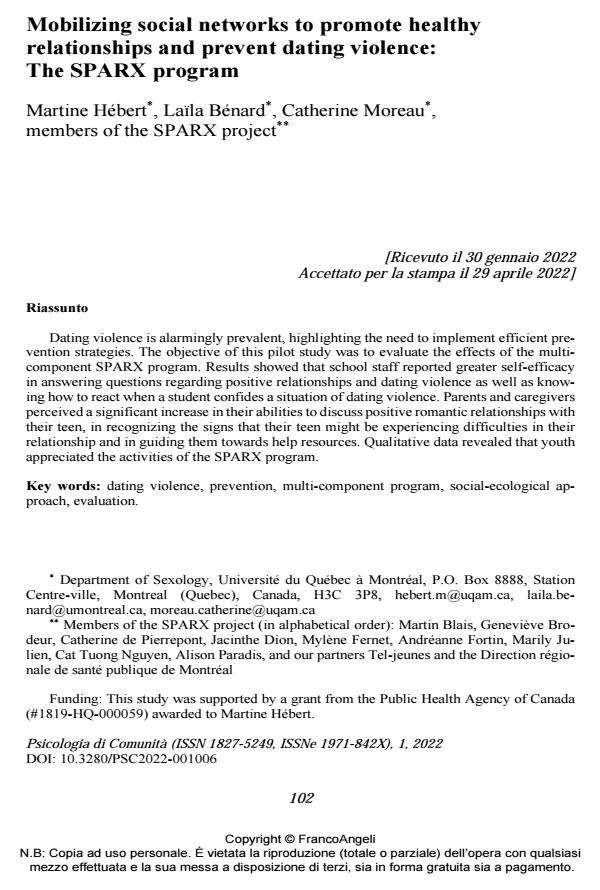Mobilizing social networks to promote heathy relationships and prevent dating violence: The SPARX program
Journal title PSICOLOGIA DI COMUNITA’
Author/s Martine Hébert, Laïla Bénard, Catherine Moreau
Publishing Year 2022 Issue 2022/1
Language Italian Pages 19 P. 102-120 File size 217 KB
DOI 10.3280/PSC2022-001006
DOI is like a bar code for intellectual property: to have more infomation
click here
Below, you can see the article first page
If you want to buy this article in PDF format, you can do it, following the instructions to buy download credits

FrancoAngeli is member of Publishers International Linking Association, Inc (PILA), a not-for-profit association which run the CrossRef service enabling links to and from online scholarly content.
- Engager les parents dans la prévention de la violence dans les relations amoureuses des jeunes : une évaluation qualitative de la composante parentale du programme Étincelles Estelle Piché, Élizabeth Hébert, Mylène Fernet, Martine Hébert, in Revue de psychoéducation /2024 pp.226
DOI: 10.7202/1114500ar
Martine Hébert, Laïla Bénard, Catherine Moreau, Mobilizing social networks to promote heathy relationships and prevent dating violence: The SPARX program in "PSICOLOGIA DI COMUNITA’" 1/2022, pp 102-120, DOI: 10.3280/PSC2022-001006